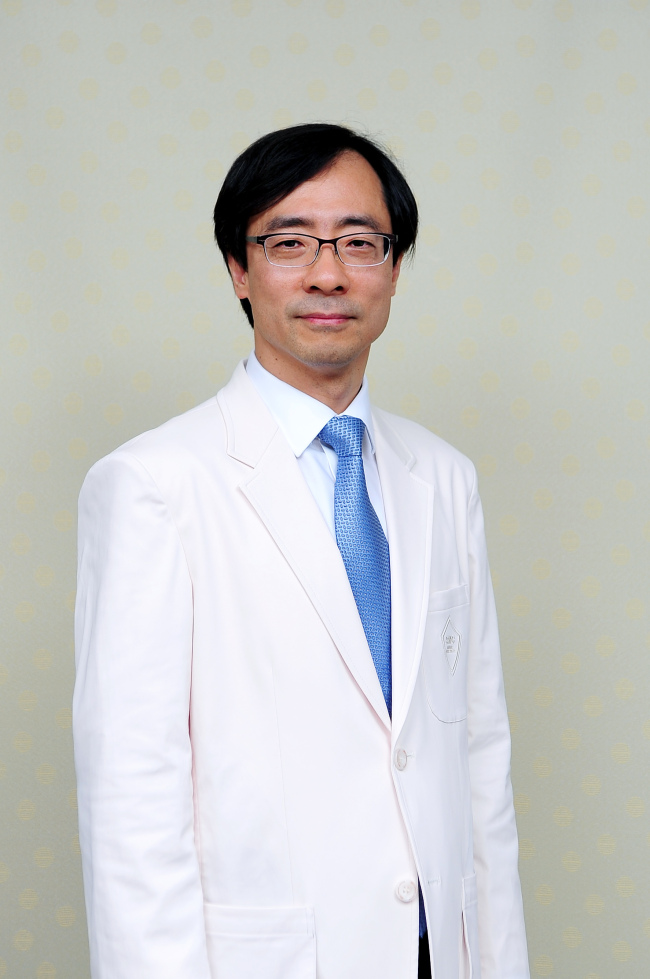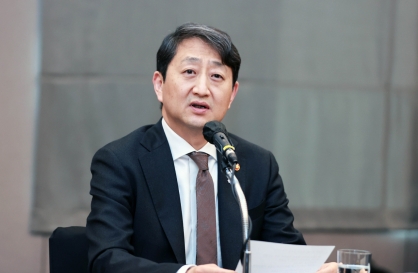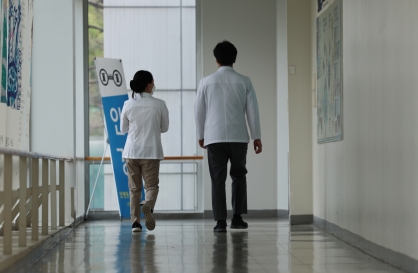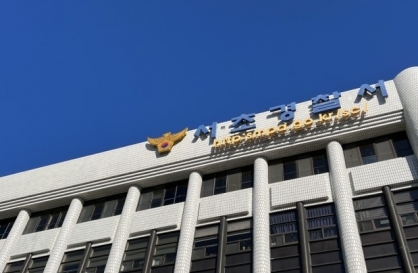
Psoriasis is a chronic skin condition that can last for 10-20 years. The affected patient will have a high chance of recurrence over their lifetime, even after initial improvement. Approximately 1-2 percent of the world’s population has this skin condition, and 60 people are newly diagnosed with psoriasis in every 100,000 people. Therefore, it is expected that a significant number of people will suffer from psoriasis in Korea.
Psoriasis is characterized by scaly, dry skin with redness, together with red small rashes that commonly appear in areas under pressure or friction, such as the joints of limbs, the buttocks and the scalp. It can also occur in finger and toenails and look similar to athlete’s foot, and cause arthritis. It may not change significantly for years, but sometimes people can have spreading rashes following a cold or using medication. Therefore, patients with psoriasis must look after their health and avoid drinking, which can worsen inflammation. They should also avoid friction or irritation to the skin such as heavy exfoliating.
The causes of psoriasis are still unclear. Recent research has suggested various immunological and inflammatory causes, and it is thought that the response of keratocytes to the cell growth factors is increased in this disease.
Patients who develop psoriasis visit oriental medicine doctors, use home remedies or visit pharmacies to cure the disease. However, inappropriate treatment can be harmful to the liver and other important organs. Patients can develop toxicity to steroids, experience worsening of psoriasis, and in severe cases, can suffer fatal consequences. There are many treatments that can cause temporary relief of the symptoms. However, no current treatment can cure the disease. Psoriasis is a condition that can recur throughout one’s lifetime.
The most important thing in the treatment of psoriasis is not the effect of the treatment, but the safety of the treatment. Rather than looking for the most effective or strongest treatment, it is important to choose the most appropriate and safest treatment available. Several different treatments have been introduced in Korea.
First is calcipotriol, which is a vitamin D-inducing ointment that has been modified to minimize the limitations of adrenocortical hormone agents. It is quite effective and its advantage is that it has minimal side effects with prolonged use. This treatment can be used with other psoriasis treatment methods, for a potentially synergistic effect. It is commonly used with UV protection or other hormone topical ointments.
The second treatment is the narrow-band UVB Treatment. Prior to this, broad spectrum UVB was used for treating psoriasis. However, more recent research has shown that wavelengths around 311nm are most effective for psoriasis. This led to the development of medical devices that provide narrow-band UVB, which is being used in several medical institutes in Korea. It is more effective than the previously used broad spectrum UVB, but it is not as effective as photochemical treatment.
The third treatment available is bath-PUVA. The most effective UV treatment is photochemical treatment using oral or topical medications, but the oral treatments can lead to digestive problems and liver dysfunction. In addition, patients must avoid direct light and use protective glasses for 48 hours after taking this medication.
Topical photochemical treatment can take a long time if there are many skin lesions, which has limited its use. However, a bath treatment has been developed to overcome this limitation. The medication is placed in the water where the patient bathes before being exposed to UV light. It minimizes the side effects and any inconvenience associated with the use of oral agents, and is popular in Europe. Its effectiveness is comparable to the oral method and it is an excellent treatment because it minimizes inconvenience such as the need to avoid UV light after treatment. However, it is limited to a small number of hospitals in Korea because of the need for extra bathing facilities within the dermatology clinic.
The fourth treatment is cyclosporine. This was developed initially for the treatment of organ rejection in transplant patients, but has shown good effects in those who have not responded to other treatments. However, long-term use of this medication is associated with toxicity, particularly to the kidneys, as for other oral medications, and should only be taken under the supervision of a specialist doctor.
Just like diabetes and hypertension, psoriasis is a chronic disease that is modified, rather than cured. You should receive treatment from the same hospital by your selected specialist who has the right knowledge and experience of this kind of disease.
Psoriasis is characterized by scaly, dry skin with redness, together with red small rashes that commonly appear in areas under pressure or friction, such as the joints of limbs, the buttocks and the scalp. It can also occur in finger and toenails and look similar to athlete’s foot, and cause arthritis. It may not change significantly for years, but sometimes people can have spreading rashes following a cold or using medication. Therefore, patients with psoriasis must look after their health and avoid drinking, which can worsen inflammation. They should also avoid friction or irritation to the skin such as heavy exfoliating.
The causes of psoriasis are still unclear. Recent research has suggested various immunological and inflammatory causes, and it is thought that the response of keratocytes to the cell growth factors is increased in this disease.
Patients who develop psoriasis visit oriental medicine doctors, use home remedies or visit pharmacies to cure the disease. However, inappropriate treatment can be harmful to the liver and other important organs. Patients can develop toxicity to steroids, experience worsening of psoriasis, and in severe cases, can suffer fatal consequences. There are many treatments that can cause temporary relief of the symptoms. However, no current treatment can cure the disease. Psoriasis is a condition that can recur throughout one’s lifetime.
The most important thing in the treatment of psoriasis is not the effect of the treatment, but the safety of the treatment. Rather than looking for the most effective or strongest treatment, it is important to choose the most appropriate and safest treatment available. Several different treatments have been introduced in Korea.
First is calcipotriol, which is a vitamin D-inducing ointment that has been modified to minimize the limitations of adrenocortical hormone agents. It is quite effective and its advantage is that it has minimal side effects with prolonged use. This treatment can be used with other psoriasis treatment methods, for a potentially synergistic effect. It is commonly used with UV protection or other hormone topical ointments.
The second treatment is the narrow-band UVB Treatment. Prior to this, broad spectrum UVB was used for treating psoriasis. However, more recent research has shown that wavelengths around 311nm are most effective for psoriasis. This led to the development of medical devices that provide narrow-band UVB, which is being used in several medical institutes in Korea. It is more effective than the previously used broad spectrum UVB, but it is not as effective as photochemical treatment.
The third treatment available is bath-PUVA. The most effective UV treatment is photochemical treatment using oral or topical medications, but the oral treatments can lead to digestive problems and liver dysfunction. In addition, patients must avoid direct light and use protective glasses for 48 hours after taking this medication.
Topical photochemical treatment can take a long time if there are many skin lesions, which has limited its use. However, a bath treatment has been developed to overcome this limitation. The medication is placed in the water where the patient bathes before being exposed to UV light. It minimizes the side effects and any inconvenience associated with the use of oral agents, and is popular in Europe. Its effectiveness is comparable to the oral method and it is an excellent treatment because it minimizes inconvenience such as the need to avoid UV light after treatment. However, it is limited to a small number of hospitals in Korea because of the need for extra bathing facilities within the dermatology clinic.
The fourth treatment is cyclosporine. This was developed initially for the treatment of organ rejection in transplant patients, but has shown good effects in those who have not responded to other treatments. However, long-term use of this medication is associated with toxicity, particularly to the kidneys, as for other oral medications, and should only be taken under the supervision of a specialist doctor.
Just like diabetes and hypertension, psoriasis is a chronic disease that is modified, rather than cured. You should receive treatment from the same hospital by your selected specialist who has the right knowledge and experience of this kind of disease.

By Lee Joo-heung
The author is a doctor at Department of Dermatology at Samsung Medical Center and a professor of Sungkyunkwan University School of Medicine. ― Ed.
The author is a doctor at Department of Dermatology at Samsung Medical Center and a professor of Sungkyunkwan University School of Medicine. ― Ed.
-
Articles by Korea Herald









![[KH Explains] Can tech firms' AI alliances take on Nvidia?](http://res.heraldm.com/phpwas/restmb_idxmake.php?idx=644&simg=/content/image/2024/05/07/20240507050619_0.jpg&u=)








![[K-pop’s dilemma] Time, profit pressures work against originality](http://res.heraldm.com/phpwas/restmb_idxmake.php?idx=652&simg=/content/image/2024/05/08/20240508050705_0.jpg&u=20240508171126)
![[Today’s K-pop] NCT Dream to drop pre-release from 2nd Japan single](http://res.heraldm.com/phpwas/restmb_idxmake.php?idx=642&simg=/content/image/2024/05/08/20240508050725_0.jpg&u=)